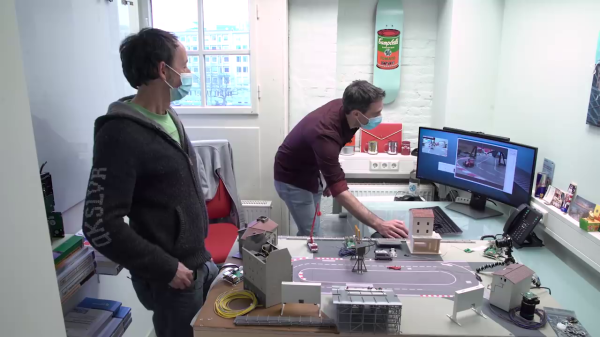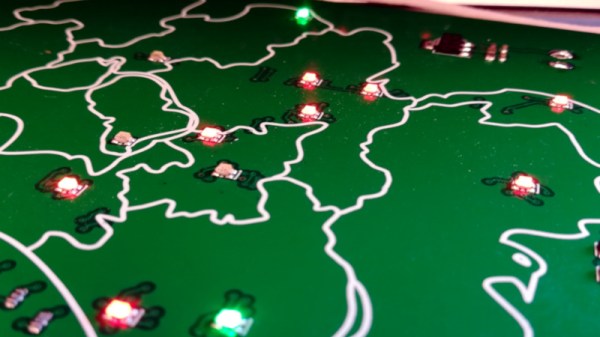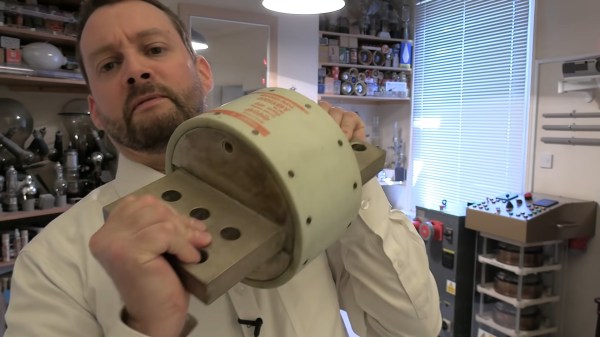[Gerrit Braun], co-founder of the [Miniatur Wunderland] model railway and miniature airport attraction in Hamburg, takes his model building seriously. For more than five years, he and his team have been meticulously planning, testing, and building a 1:87 scale of Formula 1’s Monaco Grand Prix. Models at the Wunderland are crafted to the Nth detail and all reasonable efforts, and some unreasonable ones, are taken to achieve true-to-life results. In the video down below, part of Gerrit’s diary of the project, he discusses the issues and solutions to simulating realistic television broadcasts (the video is in German, but it has English language subtitles).
The goal is to model the large billboard-sized monitor screens set up at viewing stands. In real life, these displays are fed with images coming in from cameras located all over the circuit, the majority of which are operated by a cameraman. The miniaturization of cameras has come a long way in recent years — the ESP32-CAM module or the Raspberry Pi cameras, for example. But miniaturizing the pan-and-tilt actions of a cameraman, while perhaps possible, would not be reliable over the long time (these exhibits at Wunderland are permanent and operate almost daily). Instead, the team is able to use software to extract a cropped window from high-resolution video, and moving the position of this cropped window simulates the pointing of the camera. More details are in the video.
The skill and creativity of [Gerrit] and his team is incredible. Other videos on this project cover topics like the sound system, PCB techniques used for the roads, and the eye-popping use of an electric standing desk to lift an entire city block so workers can gain access to the area. Fair warning — these are addictive, and the video below is #76 of an unfinished series. We wrote about Wunderland back in 2016 when [Gerrit] and his twin brother [Frank] teamed with Google Maps to make a street view of their replica cities. Thanks to [Conductiveinsulation] who sent us the tip, saying that the discussion about interconnected triangular PCB tiles on this week’s Podcast #122 reminded him of this for some reason. Have any of our readers visited Miniatur Wunderland before? Let us know in the comments below.



















